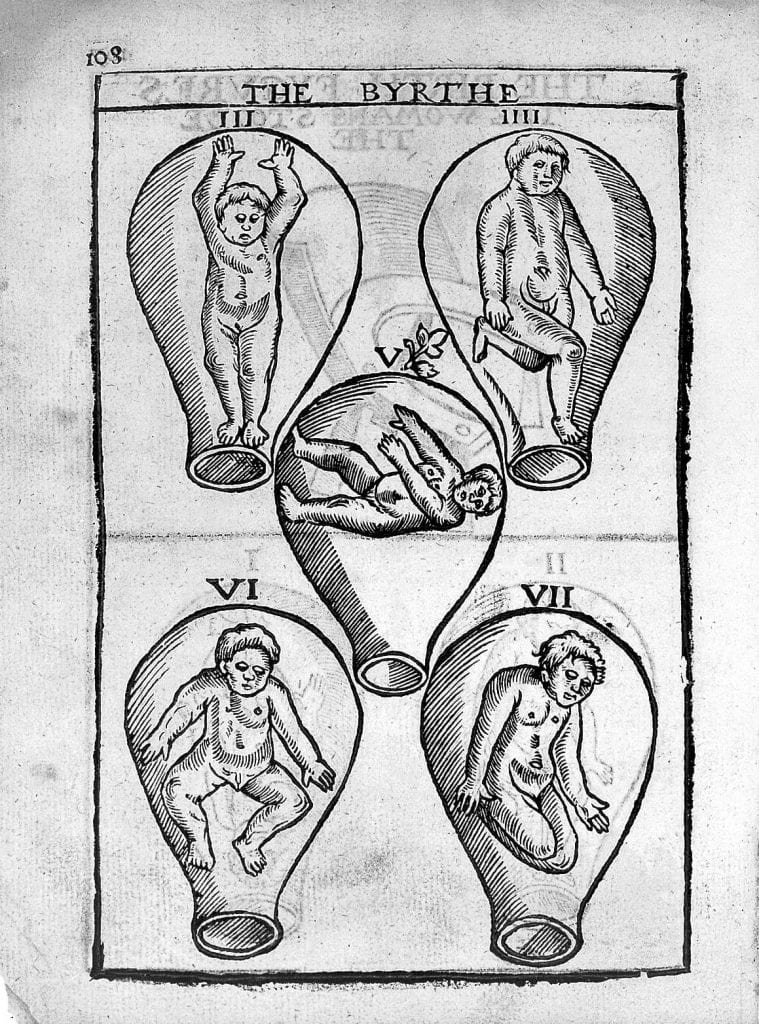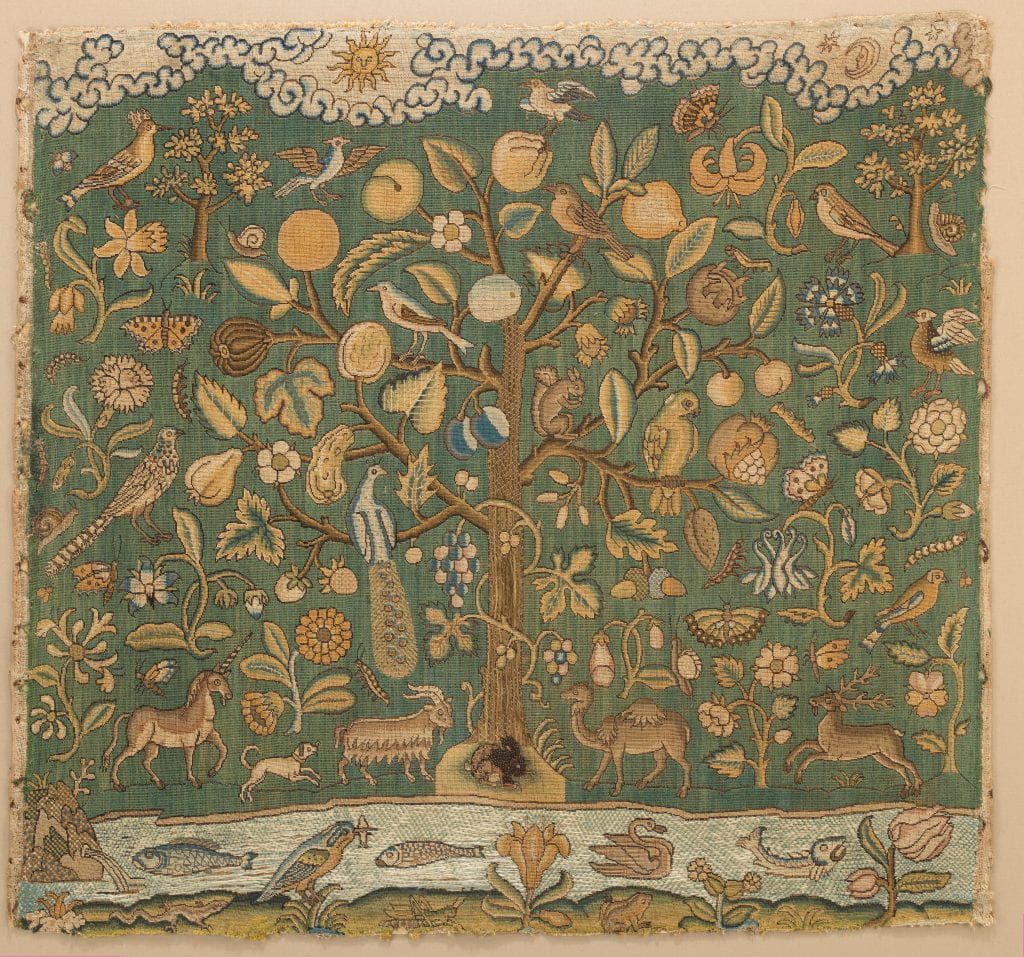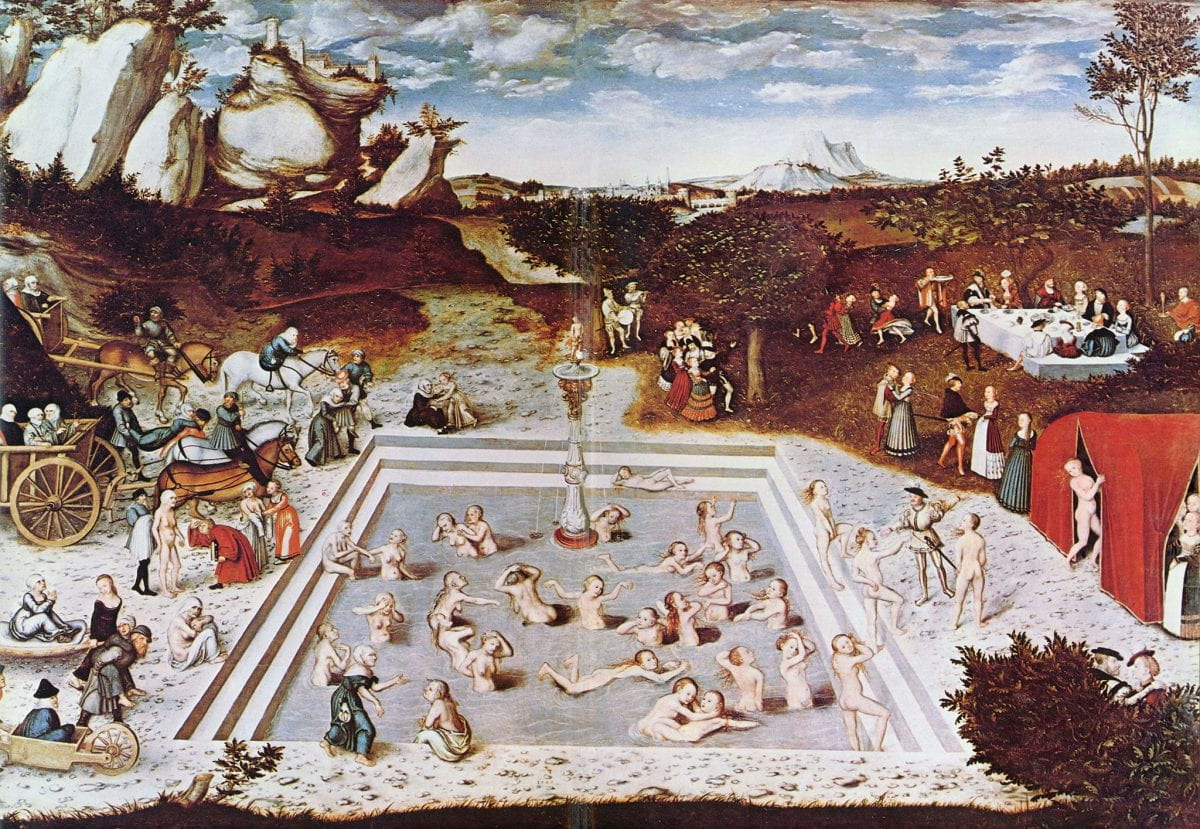By Anne M. Thell
The pursuit of long life has a long history, from Socrates to Jeff Bezos. Less known but no less intriguing in this genealogy is Margaret Cavendish (1623–73), an English writer, philosopher, and demagogue of the Restoration period who devoted much of her career to questions of mortality and developed a corresponding set of strategies to cheat death. The author’s thinking on this subject is timely not only in light of ongoing global affairs, but also for other reasons: Cavendish scholarship is exploding in both literature and, more recently, philosophy, while 2023 marks the 400th anniversary of her birth.
Cavendish was a vitalist-materialist, while she also espoused panpsychism. This means that she viewed nature as a living, moving, and sentient thing, while she also believed that nature is both eternal and infinite. Even when a particular creature dies or “dissolves,” its matter simply dissembles and migrates into new forms. For her, there was no entirely new matter in nature, nor was there entropy. Instead, the matter that composes the universe—from the furthest stars to our fingernails—exists in a state of “perpetual transformation” and thereby exists forever.
Perhaps the most obvious expression of Cavendish’s interest in immortality appears in her career-long quest for fame (or, in her words, her desire to scale “Fame’s Tower” and “Live in Many Brains”). This emphasis on the continuance of her ideas in “after-Ages” typifies what Michael W. Clune has called “the classical tradition of literary immortality,” whereby authors strive to combat time by claiming that art lives on in perpetuity. This rubric is especially important to Cavendish because she wrote in a period that did not look kindly on female philosophers. She thus imagined her texts as progeny who might achieve “glorious resurrection” in the minds of more enlightened future readers.
But Cavendish moved beyond literary tactics by writing the possibility of eluding death into her metaphysics. Across her later philosophy, which includes Philosophical Letters (1664), Observations upon Experimental Philosophy (1666), and Grounds of Natural Philosophy (1668), she offered a more totalizing approach to dodging annihilation via the transformational properties innate in natural matter. In the Cavendishean universe, nothing really dies. Instead, natural matter exists in certain formations—a human, say, or a tree—for varied durations before dissolving and then reconfiguring in new ways.
However, the author’s most spectacular—and speculative—solution to preserving bodies against the violence of time appears in the concluding pages of her final philosophical treatise, Grounds of Natural Philosophy. Here, she hypothesizes “Restoring-Beds, or Wombs” that restore life to annihilated bodies. These peculiar devices can restore any natural creature—animal, mineral, vegetable—which means that any given person or thing could be revivified exactly as it existed before decay or illness set in.

Cavendish clearly enjoys theorizing these “Beds, or Wombs.” She reasons that they could not be “Fleshy by reason the nature of Flesh is so corruptible,” yet must be “like Flesh, for Softness, or Spunginess; as also for Colour.” She also suspects that they would be located in “the Center of the World,” which is most likely a rocky island in “the Center of the Sea.” The devices consist of a “compounded” substance that contains the building blocks for “all the Kinds and Sorts of the Creatures of this World,” and, obeying laws of self-motion, automatically open once their work is done to release a perfectly restored creature.
We might recall that Cavendish was the author of Blazing World (1666), one of the earliest pieces of science-fiction in English, and thus no novice to the imaginative dimensions of scientific speculation. In keeping with these interests, she places on this island of regeneration a center within the center where the beds themselves are produced. Here we find a spectacular sci-fi vision of a massive “Rocky Creature” that is “all covered with its own Productions”—some wombs “hung by Strings, or Nerves: others stuck close,” some grow out of the “upper parts,” others “the middle” or “lower parts.” This creature is “as lasting as the Sun, or other Planets,” and thus “not subject to decay” (a smart detail that eliminates the problem of finding restoring beds for the restoring beds).
If this all sounds pretty wild, both for the 1660s and today, it is. But it is also canny, self-aware, and largely consistent with her later philosophy. One might immediately notice that these contrivances provide a natural, material, and decidedly gendered account—they are wombs, after all—of revivification that overtly competes with religious notions of resurrection (a rather risky postulate in seventeenth-century England). Indeed, these devices provide a more satisfying explanation for what is essentially a fantasy of an infinite series of lives. One might also notice that these “Beds, or Wombs” eradicate the need for men, sex, or god. In this way, Cavendish reformulates the search for everlasting life in a feminist-materialist way.
Broadly, the wombs also demonstrate Cavendish’s interest in nature’s sentient resilience, as well as its ability to repair and renew its constituent parts. Unlike most scientific thinkers of the period (and notably experimental scientists like Francis Bacon, Robert Boyle, or Robert Hooke), Cavendish insisted that humans are part of nature—not above it—and thus that we lack the perspectival leverage to see and understand its operations. A committed probabilist, she believed that human knowledge is always approximate (certain options might shave closer to truth than others, but are never perfect or comprehensive). In Grounds, she recognizes that bodily regeneration is wildly conjectural and thus frames the debate as a lighthearted argument between the parts of her mind and pokes fun at herself for too zealous an interest in immortality. Yet in the end, she decides that it is “at least, probable, there were such things in Nature as Restoring-Beds, or Wombs.” Thus Cavendish concludes her career engaging a type of philosophical speculation that produces open-ended pleasure (i.e., the beds are fun to think about and cannot be ruled out entirely). Such inconclusiveness thwarts death, too, as it becomes an interpretive puzzle for future readers.
If rocky “Wombs” seem too eccentric to demonstrate the regenerative impulses that define Cavendish’s later views on nature, we might return to their logical underpinning: her concept of “translation.” Cavendish was a devout materialist—rivaling only Thomas Hobbes as the Restoration thinker most committed to this doctrine—yet she also recognized that bodies tend to slow, decline, and fail. In response to this problem, translation allows infinite transmutation: When any “particular motion” or “Society” ends, its matter is “not annihilated, but changed.” Organic matter exists “by a perpetual supply and succession of particulars,” or “perpetual alternations, generations, and dissolutions.” Hence, “infinite varieties” of combinations generate “infinite varieties” of “Productions,” which are always temporary and contingent.

Surprisingly, this topic—“Restoring-Beds, or Wombs” in particular and regeneration more broadly—has received only scant attention from Cavendish scholars, although an increasing number are approaching her work from the perspective of eco-criticism, human/non-human relations, and the medical humanities. Cavendish was a thinker uniquely in and out of her time; her work has deeply syncretic aspects—she was well-versed in both ancient and contemporary philosophy—as well as a restless, idiosyncratic streak, which often anticipates much later thinking (e.g., materialist understandings of consciousness, many-worlds theory, deconstructions of the Anthropocene, Romantic views of imagination, biotech-fueled rejuvenation). She is also one important voice in a long line of literary authors who seek to counter neurobiological time and its inevitable erosion of pleasure, sensation, and self.
As is likely obvious by this point, Cavendish was a unique voice of the later seventeenth century. In her thoroughgoing materialism, she shares much with Hobbes; however, unlike Hobbes, she rejects mechanism and claims instead that all of nature lives, thinks, perceives, and moves itself, with intent and volition. Her hylozoism might seem to align her with thinkers like Henry More or Anne Conway; unlike those vitalists, though, Cavendish adamantly denies “spirits” or incorporeal substances in nature: as she argues, nothing can exist “between Something and Nothing.” She does acknowledge the possibility of a “divine soul,” but this supernatural entity falls far beyond the scope of natural philosophy. Along with Hobbes, Descartes, and More, Cavendish sparred with Jan Baptiste van Helmont, whose materialist understanding of disease clearly influenced her medical thinking. But she disparaged his fusing of theology and natural philosophy and his interest in supernatural substances like blas. In sum, her rigorous brand of materialism stands apart because it infuses all natural matter—rocks, algae, humans—with life, sentience, and free will.
Cavendish’s materialism is also what connects her most vividly to the present day. Indeed, her material theory of mind is a clear precedent to contemporary understandings of consciousness. Anil Seth, for instance, has demonstrated that our sense of self is based on the experience of our bodies, as we perceive our physical condition via internal sense organs. Thus, consciousness is rooted in our nature as biological organisms: we are “beast machines,” a term Seth adapts from Descartes, and the brain ensures our survival and organismic self-regulation. Seth views consciousness as an embodied system (like many other recent thinkers who seek to reconnect body and mind), and locates us firmly within nature, an approach that Cavendish anticipates. Like Seth, Cavendish concentrates on embodied sentience, while she also, as a rationalist-materialist, examines the phenomenology of consciousness as bodily phenomenon.
In these virus-haunted days, lethal threats to life on this planet seem a uniquely modern predicament. Cavendish reminds us to historicize our entreaties for health and longevity, which extend into past and future—from ancient elixirs to a new quest for immortality in Silicon Valley. Jeff Bezos (Altos Labs, Unity); Peter Thiel (Methuselah Foundation, Unity); Sergey Brin and Larry Page (Calico)—all invest massive sums in life-extending research, or “biohacking,” which does not strive to eradicate death entirely but, over future decades, to control the body’s relationship with time by, say, arresting bodily degeneration (e.g., sustaining heart or brain health), or reprogramming our bodies on a cellular level (e.g., cell-tissue rejuvenation via didactic proteins). These are appeals for a radical extension of life, if not immortality in the Ponce de León sense. But these dreams of living forever on a dying planet—and then shooting into space to set up new colonies—remain noticeably ego-driven, masculinist, and anthropocentric (whatever trickle-down effects they might have on ordinary people). (Here one cannot help but think of Jonathan Swift’s Struldbrugs.) By contrast, Cavendish’s “Wombs” restore all natural things, not just humans, even after their expiry. She therefore reconfigures a familiar yearning in a way that displaces humans as sole beneficiaries.
Today, with our materialist leanings, our ongoing tussle with the “hard problem” of consciousness, and our tendency to view humans as just one small part of nature, we are perhaps better positioned to notice Cavendish’s ingenuity. Indeed, within the academy at least, she has found her “glorious resurrection.” Her work is now standard fare in literature classes, following the pioneering work of feminist scholars of the 1980s and 1990s (here I think of Sylvia Bowerbank, Sandra M. Gilbert and Susan Gubar, Sara Mendelson, Anna Battigelli, Sarah Hutton, and Eileen O’Neill, to name only a few). More recently, she has made her way into the philosophy canon, which is notoriously slow-changing. This is long overdue, since she responds with intelligence and creativity to the same fundamental questions as her more famous male contemporaries. She is vital to understanding more fully the philosophical and scientific debates of her era because she noticed and critiqued their masculinist assumptions, while she also articulated alternate explanations of a universe that she saw as infinite, sentient, and alive. We might even say that this renegade thinker offers a secret history of the so-called “Scientific Revolution,” one that envisions nature as a self-knowing, self-governing system that produces and sustains life in ways far beyond human perception.
Cavendish’s “Restoring-Beds, or Wombs” are one distinctive iteration of the human drive to imagine lives that continue on beyond the grave. They are also the final display of Cavendish’s lifelong investment in preserving natural productions against the indignities of time and, broadly, in refuting the temporal-material conditions of our lives. She strives to enrich experience—and to ennoble bodies—in an intense yet secular battle against “the Nature of Blood and Flesh.” In 2023, as we celebrate the 400th anniversary of her birth, she scores one point in that arduous contest and inches further towards “monumental fame.”
Anne M. Thell is Associate Professor of English literature at National University of Singapore and, in 2022-23, a Sassoon Fellow at The Bodleian Library, Oxford. Her most recent book is the Broadview edition of Cavendish’s Grounds of Natural Philosophy (2020). She is now at work on two new projects: One on mental illness as it relates to early British fiction, and another on Cavendish and time.
Edited by Shuvatri Dasgupta & Tom Furse
Featured Image: “The Fountain of Youth,” 1546, Lucas Cranach the Elder. Image Wikimedia Commons.



